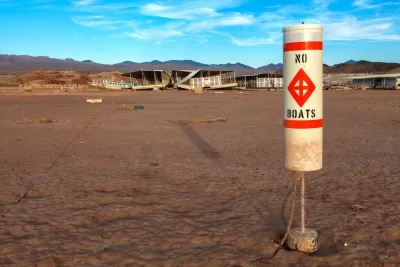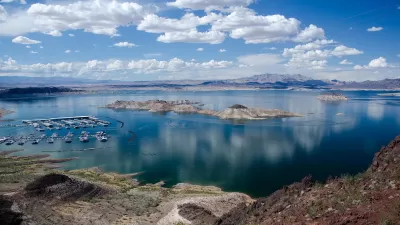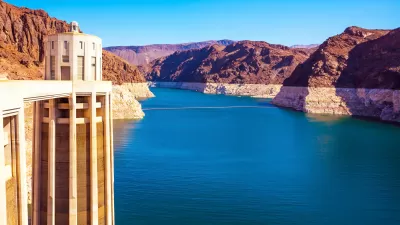While the historic agreement set a new precedent for water rights, its inherent flaws, growing demand, and the threat of climate change make much of it obsolete for today’s needs.

The first treaty in U.S. history to bring together more than two states, the Colorado River Compact turns one hundred this month. But, as Jonathan Thompson writes in High Country News, the historic seven-state agreement is “showing its age,” no longer a viable document for addressing the water shortage facing communities along the Colorado River today.
The article analyzes the compact’s history, its most relevant provisions, and how today’s policymakers can redress the mistakes made in those early days and plan for a more resilient future. The treaty was full of holes from the beginning, Thompson explains. “Tribal nations were not only left out of the Compact and negotiations, but their senior and therefore stronger water rights were discounted altogether.” Thompson asserts that “The exclusion was far worse than a gross oversight; it was a blatant attack on tribal sovereignty.”
Thompson adds that the compact was based on flawed or purposely misleading assumptions about water supplies and needs. Yet “The document’s framers never even considered the possibility that the river’s flows would diminish over time, as is now the case thanks to climate-change-induced aridification.” The original document allocated 16 million acre-feet of water “in perpetuity” to irrigation, calling it 80 percent of the river’s flow, a conscious overestimate even at the time.
According to Thompson, “Now that it’s reaching its centennial, perhaps it’s time for the Colorado River Compact to retire, and for the river’s users — all of them — to sit down and negotiate a new pact for a changing world.”
FULL STORY: On its 100th birthday, the Colorado River Compact shows its age

Alabama: Trump Terminates Settlements for Black Communities Harmed By Raw Sewage
Trump deemed the landmark civil rights agreement “illegal DEI and environmental justice policy.”

Study: Maui’s Plan to Convert Vacation Rentals to Long-Term Housing Could Cause Nearly $1 Billion Economic Loss
The plan would reduce visitor accommodation by 25% resulting in 1,900 jobs lost.

Planetizen Federal Action Tracker
A weekly monitor of how Trump’s orders and actions are impacting planners and planning in America.

Waymo Gets Permission to Map SF’s Market Street
If allowed to operate on the traffic-restricted street, Waymo’s autonomous taxis would have a leg up over ride-hailing competitors — and counter the city’s efforts to grow bike and pedestrian on the thoroughfare.

Parklet Symposium Highlights the Success of Shared Spaces
Parklets got a boost during the Covid-19 pandemic, when the concept was translated to outdoor dining programs that offered restaurants a lifeline during the shutdown.

Federal Homelessness Agency Places Entire Staff on Leave
The U.S. Interagency Council on Homelessness is the only federal agency dedicated to preventing and ending homelessness.
Urban Design for Planners 1: Software Tools
This six-course series explores essential urban design concepts using open source software and equips planners with the tools they need to participate fully in the urban design process.
Planning for Universal Design
Learn the tools for implementing Universal Design in planning regulations.
Caltrans
Smith Gee Studio
Institute for Housing and Urban Development Studies (IHS)
City of Grandview
Harvard GSD Executive Education
Toledo-Lucas County Plan Commissions
Salt Lake City
NYU Wagner Graduate School of Public Service





























